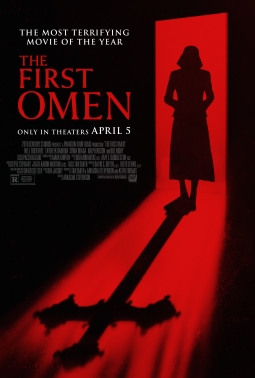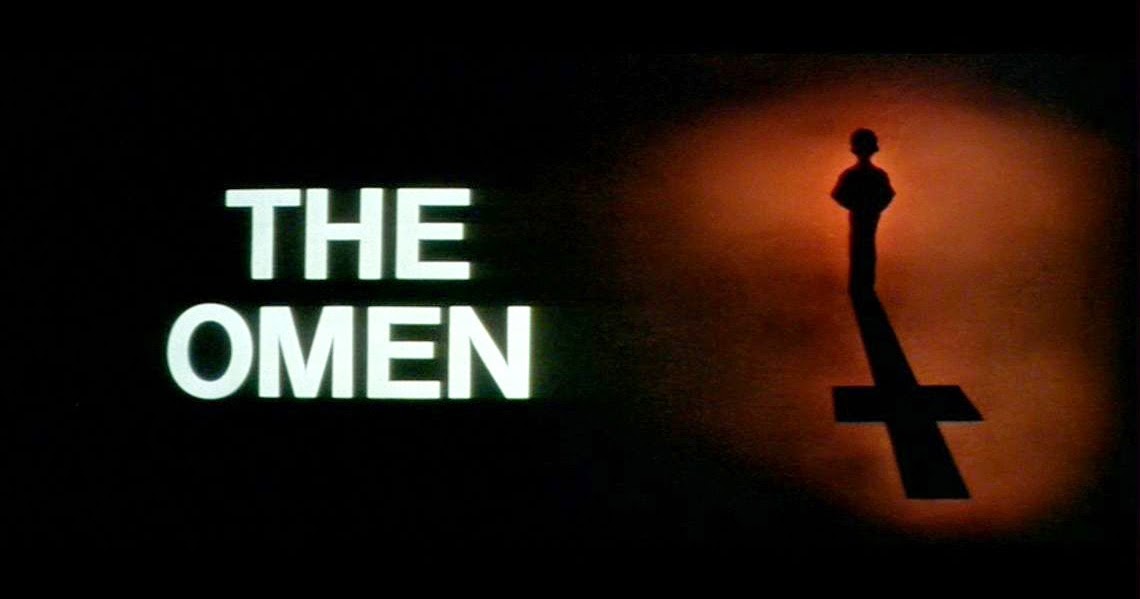The Poppies of Terra #27 - Foreshadowing the Omen
By Alvaro Zinos-Amaro
2024-04-10 09:00:16
“In birth and death the generations embrace.”
–Robert Thorn, The Omen (1976)
 In films, too, do the generations embrace, as exemplified by the meticulously crafted The First Omen, the directorial debut of Arkasha Stevenson. Despite poking at themes somewhat different from those in the original, this prequel manages to mesh its aesthetic and, more importantly, build on an affect of dread, more effectively than any of the original’s sequels or its ill-fated reboot.
In films, too, do the generations embrace, as exemplified by the meticulously crafted The First Omen, the directorial debut of Arkasha Stevenson. Despite poking at themes somewhat different from those in the original, this prequel manages to mesh its aesthetic and, more importantly, build on an affect of dread, more effectively than any of the original’s sequels or its ill-fated reboot.
From its red-and-black poster, evocative of the original movie’s title card, to its riveting pre-title sequence, with an unforgettable Charles Dance as Father Harris, to the early scenes of driving around a tumultuous Rome, just as in the classic, this new entry in the series makes it easy indeed to slip into a shadowy world of conspiracies and Biblical mysticism. The plot of this story has a preordained outcome, but writers Tim Smith, Arkasha Stevenson and Keith Thomas nevertheless manage to construct an interesting narrative structure leading up to it, with an ending that ingeniously delivers more than expected. Nell Tiger Free’s commitment to the lead performance of Margaret is fierce, and will hopefully avail her of more feature projects. Everyone in the supporting cast is effective, with Bill Nighy’s suave demeanor delightfully subverting his character’s avuncularity into something inaccessible and menacing. Ralph Ineson, as Father Brennan (played by Patrick Troughton in the original), convinces with the intensity of his desperation.
One of the film’s technical accomplishments is a seamless marriage of 70s aesthetics–zooms, roving aerial shots that become erratic, in contrast to today’s coldly precise drone vistas, off-center framings that often emphasize something other than foreground figures, and so on–with a more contemporary horror sensibility. In the department of legacy continuity we should applaud Aaron Morton’s beautiful, stylized cinematography and Mark Korven’s immersive score, which knows when to layer in whispering, just as did Jerry Goldsmith’s, when to break out full choral madness, and when to recede into near stillness. Maria Luigia Battani’s set decoration, as well as the work of the entire production design team, should likewise be commended. Well into the movie, a simple scene of Margaret coming down some stairs leading to an underground chamber beneath Vizzardeli Orphanage could have been a generic connective-tissue plot beat, but under Stevenson’s artful direction the crew creates a stunningly beautiful snapshot of aged stonework and chilly darkness. Margaret freezes for a moment, bringing to life a portrait of doom. Notice too the splendid tendril-like arrangement of her hair when awakening in a daze during two key scenes, suggestive of far-reaching forces and ancient, primordial horrors. Resonances abound, as for instance how background candles during an important rite seem to have grown out long pointed wax stalactites, in turn evoking slender, demonic fingers, as do Nighy’s hands during the movie’s denouement. If you’re looking for a particular phrase from the original, you won’t be disappointed; and, to boot, it precedes one of the film’s most memorable acts of carnage, which pays direct reference to one of the best kills in the third entry, The Final Conflict. The original film told us of Damien’s luxurious “day room”; here, Carlita Scianna (Nicole Sorace) is often relegated to “the bad room.” What was once bad is now worse.
 In the 1976 Omen, Richard Donner expertly ramped up the horror by progressively confronting Robert Thorn with more and more empirical evidence that his son–adopted during a shady subterfuge orchestrated by evil agents–was in fact the Antichrist and had to be killed. Thorn is let down by the structures around him: the Church has deceived him, his family life unravels, and his political power can’t stop Damien. “I don't know whose son I'm raising,” he says at one point. He must turn to ancient prophecies to recognize the apocalypse that would be ushered in by his offspring. In a reversal of Freud’s famous Oedipal complex, the Father must here displace the Son in order to achieve balance. Gregory Peck, at the time of making the movie, was in his late 50s. Let’s say the character he was portraying was anywhere between Peck’s age or up to a decade younger. That would make Robert Thorn part of the Greatest Generation or perhaps the Silent Generation. Thorn’s journey is one of reluctant but ultimate acceptance that his son, figuratively representing Baby Boomers (or even Generation X), cannot be trusted with the future. In this way, we can see how The Omen encodes generational frustration and anxiety by the Greatest/Silent Generation, who had emerged from the twin traumas of the Great Depression and World War II, and may have found their confidence in the future shaken by Baby Boomers/Gen Xers’ self-absorption, disrespect, counterculture strains and distrust or paranoia about the government. In birth and death the generations embrace, but one might have to vanquish the other. Wrapping this up in the language of Catholicism lent the film an aura of classical mythmaking. Indeed, we can go beyond demographic tensions, and look to the Greek story of Cronus, who after becoming ruler of the gods, ate his own children, Demeter, Hestia, Hera, Hades, and Poseidon. Cronus is often shown with the scythe or sickle, which represent not only agriculture, but the ravishes of time itself. The Omen, seen in this way, is about despair at extinction, a deep fear of displacement. Thorns, after all, do not flower; they are pointed mechanisms of protection.
In the 1976 Omen, Richard Donner expertly ramped up the horror by progressively confronting Robert Thorn with more and more empirical evidence that his son–adopted during a shady subterfuge orchestrated by evil agents–was in fact the Antichrist and had to be killed. Thorn is let down by the structures around him: the Church has deceived him, his family life unravels, and his political power can’t stop Damien. “I don't know whose son I'm raising,” he says at one point. He must turn to ancient prophecies to recognize the apocalypse that would be ushered in by his offspring. In a reversal of Freud’s famous Oedipal complex, the Father must here displace the Son in order to achieve balance. Gregory Peck, at the time of making the movie, was in his late 50s. Let’s say the character he was portraying was anywhere between Peck’s age or up to a decade younger. That would make Robert Thorn part of the Greatest Generation or perhaps the Silent Generation. Thorn’s journey is one of reluctant but ultimate acceptance that his son, figuratively representing Baby Boomers (or even Generation X), cannot be trusted with the future. In this way, we can see how The Omen encodes generational frustration and anxiety by the Greatest/Silent Generation, who had emerged from the twin traumas of the Great Depression and World War II, and may have found their confidence in the future shaken by Baby Boomers/Gen Xers’ self-absorption, disrespect, counterculture strains and distrust or paranoia about the government. In birth and death the generations embrace, but one might have to vanquish the other. Wrapping this up in the language of Catholicism lent the film an aura of classical mythmaking. Indeed, we can go beyond demographic tensions, and look to the Greek story of Cronus, who after becoming ruler of the gods, ate his own children, Demeter, Hestia, Hera, Hades, and Poseidon. Cronus is often shown with the scythe or sickle, which represent not only agriculture, but the ravishes of time itself. The Omen, seen in this way, is about despair at extinction, a deep fear of displacement. Thorns, after all, do not flower; they are pointed mechanisms of protection.
The First Omen shifts that fear of displacement from the external to the internal. The mother of the Antichrist, violated, is herself the harbinger of End Days; the problem now lies entirely within. Margaret’s last name is Daino, meaning “fallow deer” or “fallow doe” in Italian, a phrase which the 16th Century English folk ballad “The Three Ravens” gave metaphorical import by using it to refer to the Knight’s pregnant lover or mistress. By leaning into the collapse of society through the depiction of civil unrest and violent student protests, The First Omen heightens tensions around an already inherently dangerous biological act, here callowly usurped for the purpose of attaining power. Cueing in the body horror, the film wrings every drop of unease from this framing through foreshadowing–Margaret’s vision while watching a struggling mother give birth is genuinely disturbing–, by revealing the aberrant previous attempts to create the Antichrist, and finally leading us to the delivery (no spoiler here, since we know that Damien will be born). The woman’s body has become a signifier of gestational, rather than generational, usurpation. Like in the recently released Immaculate, that appropriation is confronted. As in last year’s Birth/Rebirth and a host of other films, motherhood and bodily autonomy remain urgent topics, with Arkasha Stevenson here uniquely contributing to the conversation.
One intriguing element that The First Omen chooses not to explore is the provenance of the Jackal itself. We can speculate about a sequel to The First Omen set contemporaneously with Damien or even The Final Conflict. But maybe instead of moving forward, we’ll go back again. Perhaps in a few year’s time we’ll get a prequel to this prequel–Omen Prime: Jackal’s Reign? The Omen: Day of the Jackal, Day of the Beast? The First Omen: Devil Sent?--that delves into the origins of Anti-christ’s ante-cedent. As long as the creative team behind this film leads the charge, I’ll be there on opening night. Sanguis bibimus, corpus edimus…
